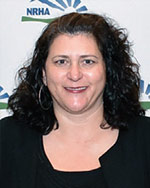Rural EMS: Critical services hang in the balance
 Nikki King  Michelle Mills |
Provider shortages and limited access to health services are not new concerns for rural health systems, but access to emergency medical services (EMS) has also reached a critical juncture. “It has been a gradual problem that we have been aware of,” says Nikki King, manager of addiction services at Margaret Mary Health in Batesville, Ind. “But it’s reaching a point where some rural health systems are forced to hold bake sales in order to keep emergency services available.”
Many contributing factors
One of the universal aspects of the EMS shortage is a dearth of qualified employees in rural areas. There are many reasons for this scarcity, including low and aging population, a low volume of qualifying runs to earn emergency certifications, and struggling economies that force potential volunteers to work more than one job or impact the ability of employers to allow volunteers to train or go on runs.
“In some counties there may be a proliferation of private ambulance companies competing for a limited quantity of qualified EMS workers,” explains King. “This drives up the hourly wage and makes it harder for those companies to keep operating.”
Geographic factors also impact the high cost of emergency services. Often emergency medical services are apportioned by county and in many cases cover hundreds of square miles or challenging, mountainous terrain. “In Colorado our counties are huge, and whether mountainous or flat, providing service to such large areas is time consuming and therefore costly,” says Michelle Mills, Colorado Rural Health Center CEO and NRHA Board of Trustees secretary.
Economic challenges impact both service providers and patients. “There are times that an emergency vehicle will be sent out on a call and emergency services are provided, but the patient refuses transport back to the hospital,” explains King. “They might be un- or underinsured and afraid of the high cost of an ambulance ride or emergency department visit.” When the EMS provider is unable to complete the call by delivering the patient, it impacts reimbursement.
With many rural hospitals already operating in the red, costs associated with poor reimbursement may leave a facility unable to provide EMS. Counties may attempt to take up the slack, but their budgets are also shrinking.
Policies and programs provide hope
“One way that policy can help is for counties to designate EMS as essential services,” King says. “This protects funding and ensures that EMS will be provided to those in need.” However, specific provisions vary by location, and the responsibility for providing emergency services may fall to already stressed local governments.
Another innovative program with both economic and operational advantages is the community paramedicine model. Through a community paramedicine program, EMS professionals are trained to assist with primary care, public health, and preventive services for underserved members of the community. In Eagle County, Colo., officials have begun to train EMS workers in post-surgical guidelines and care. “The community paramedicine model allows EMS workers to practice at the top of their license, not just doing ambulance runs but learning and implementing post-discharge guidelines,” Mills explains. When EMS workers double as community caregivers, it can lower readmission rates and positively impact value-based care. Not only does this provide a positive economic benefit, it also engages the community and reduces gaps in health care services.
Another program being explored is rural EMS enhancement, which allows providers from rural settings with low case volumes to increase patient encounters and the types of medical and trauma incidents they treat.
This may provide an opportunity for EMS professionals to advance their licensure, as well as transfer knowledge to colleagues in rural communities.
No easy answers
With a growing number of rural EMS services in immediate operational jeopardy, there is a pressing need for focused action. In an NRHA policy brief, King and her research partners recommend defining more efficient and reliable funding to reimburse EMS services. Additionally, the researchers suggest more comprehensive monitoring and reporting of rural EMS to develop innovative programs that encourage best practices in EMS structure and implementation. While there are no easy answers, the need is clear and urgent to increase access to EMS for rural communities.
When EMS workers double as community caregivers, it can lower readmission rates and positively impact value-based care.
